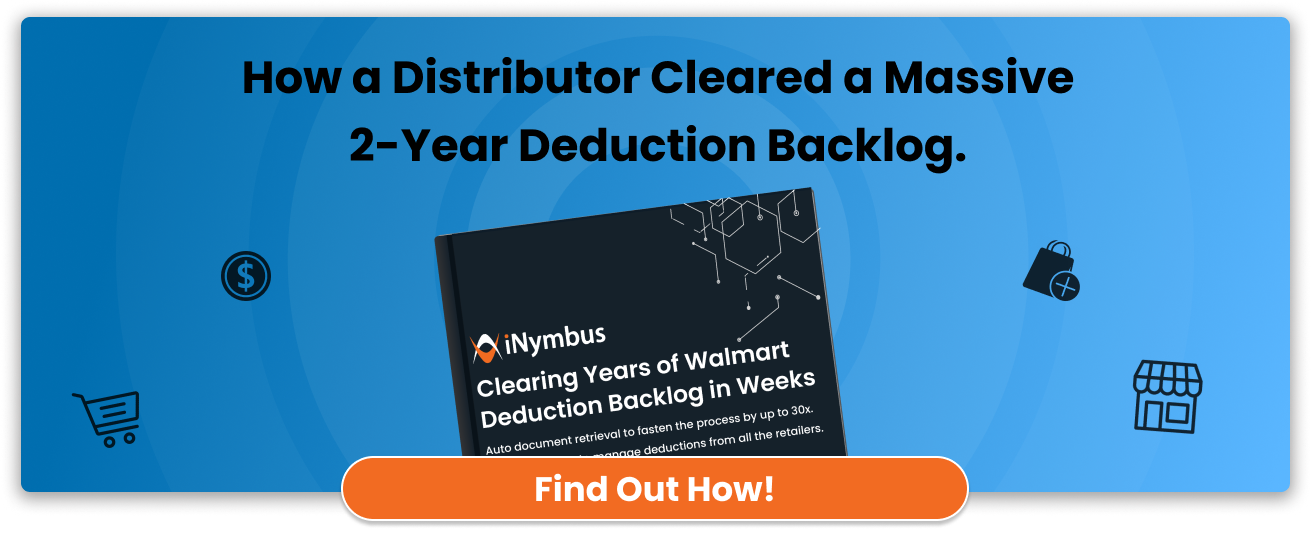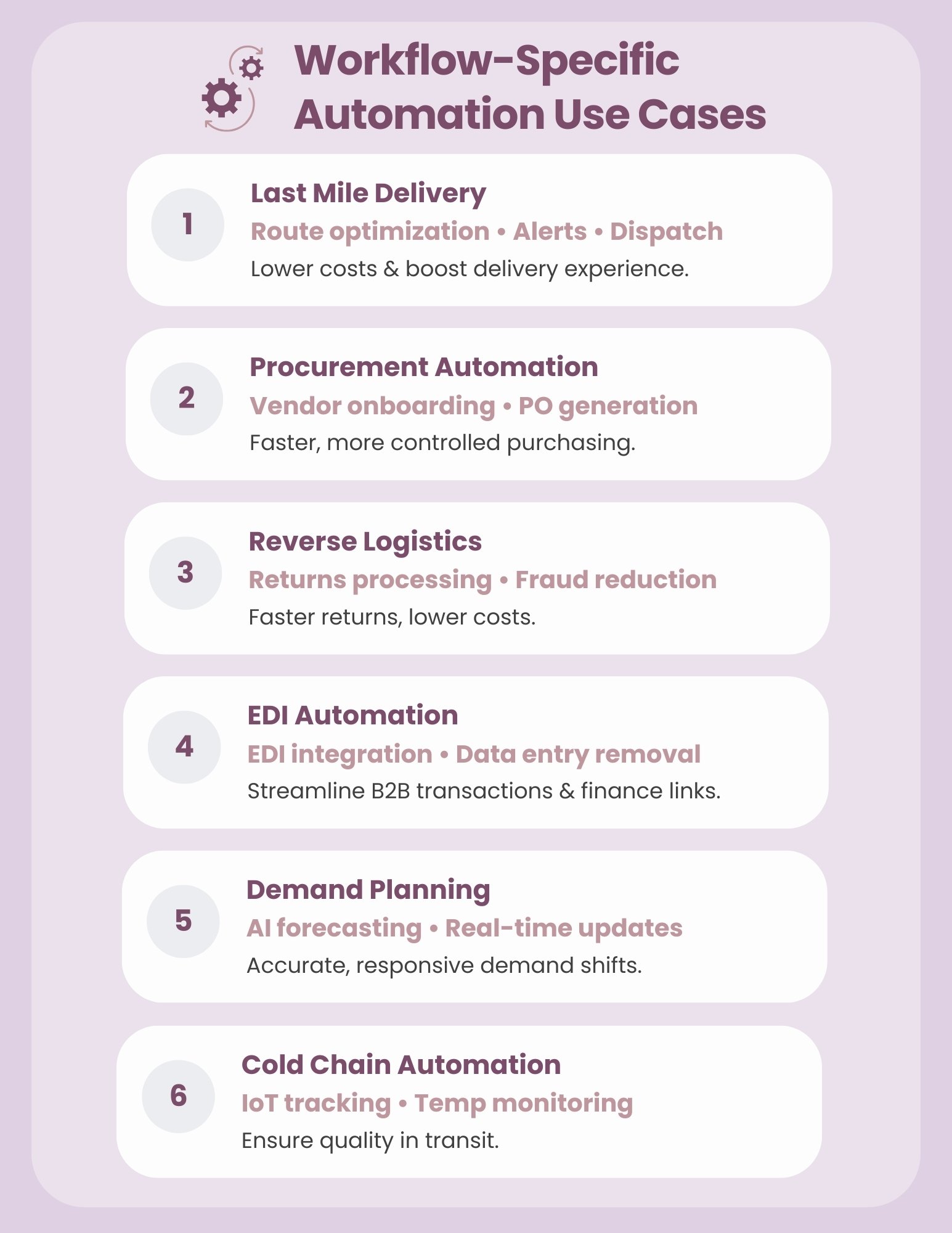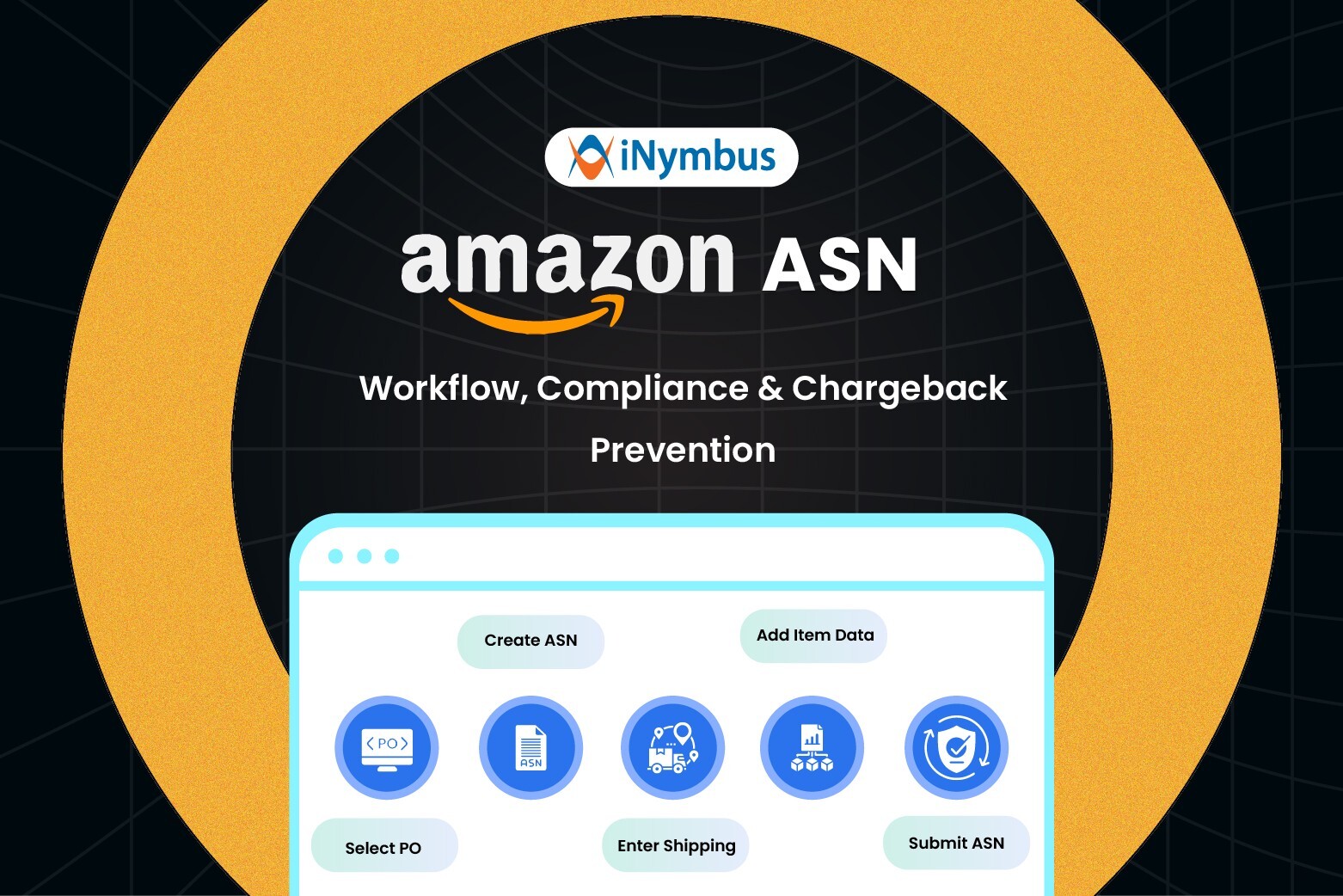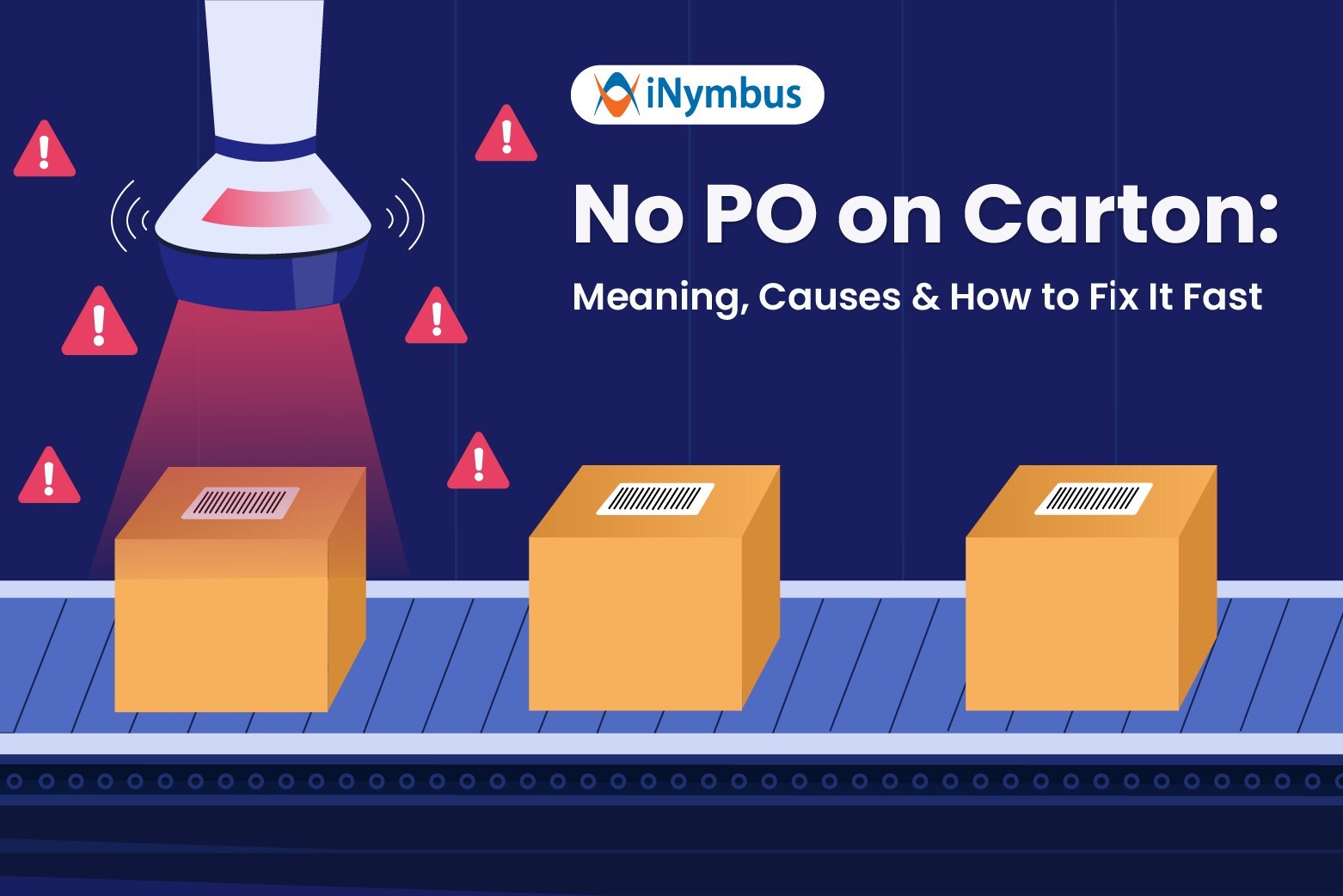Automation in Logistics and Supply Chain Management
 Automation is no longer a future-facing initiative. It is the operational baseline for any supply chain built to scale, adapt, and compete.
Automation is no longer a future-facing initiative. It is the operational baseline for any supply chain built to scale, adapt, and compete.
And yet, automation is still widely misunderstood. Many businesses conflate digitization with true automation. Others buy point solutions without a clear integration roadmap. The result? Fragmented systems, manual workarounds, and high-cost inefficiencies hiding in plain sight.
This guide offers a complete breakdown of:
- What supply chain automation really means
- Core benefits of logistics automation
- Leading technologies driving automation today
- Key tools and platforms shaping modern supply chains
- How to plan an automation-first strategy that actually sticks
What Is Supply Chain Automation?
Supply chain automation refers to the use of technology to perform tasks, decision-making, and processes across logistics operations with minimal human intervention.
This includes everything from automated order picking and robotic warehouse systems to AI-powered demand planning and digital freight management. Automation is not just about speed. It is about consistency, scale, and eliminating avoidable friction.
Automation vs Digitization
Digitization refers to converting manual workflows into digital formats. Automation takes that a step further by enabling those systems to act without manual input. A spreadsheet emailed back and forth is digital. A smart WMS that reorders based on real-time stock levels is automated.
Benefits of Automation in Logistics
Every major logistics leader is now measured on efficiency, resilience, and cost control. Automation directly impacts all three.
Here are the biggest gains:
1. Speed and Throughput
Automated order fulfillment systems process tasks faster and with fewer errors. From conveyor-integrated picking to shipping label generation, automation increases velocity without overloading teams.
2. Accuracy and Compliance
Automation reduces human error in data entry, labeling, invoicing, and shipping documentation. This helps avoid chargebacks, delays, and disputes.
3. Inventory Optimization
Automated inventory systems track movement in real-time. Smart forecasting tools adjust replenishment based on demand trends, not just historical averages.
4. Labor Reallocation
Contrary to fear-driven narratives, automation frees up humans for higher-value tasks. Instead of scanning barcodes for eight hours, they can analyze exceptions, support customers, or improve processes.
5. ROI and Cost Reduction
Warehouse automation, when aligned with business needs, delivers a measurable return on investment. This includes fewer stockouts, faster cycle times, and lower per-unit fulfillment costs.
Types of Supply Chain Automation Technologies
Different layers of the supply chain benefit from different types of automation. Below are the key categories and their contributions to logistics transformation.
1. Warehouse Robotics
These include Automated Guided Vehicles (AGVs), robotic arms, and conveyor-integrated bots. They handle picking, packing, material transport, and sorting.
2. Robotic Process Automation (RPA)
RPA software mimics human actions for repetitive tasks. In logistics, RPA is especially effective in:
- Processing invoices and bills of lading
- Matching shipment data with retailer claims
- Logging freight updates into ERP systems
One often overlooked RPA opportunity lies in deduction management. Retailers frequently issue chargebacks and claims for issues ranging from shipping errors to compliance violations. Processing these manually can cost teams hundreds of hours and thousands of dollars in unrecovered revenue.
Platforms like iNymbus automate this entire workflow. They ingest retailer deduction data, match it against shipping and invoicing records, and help resolve or dispute claims efficiently.
By automating deduction management, companies reduce revenue leakage and free up finance teams to focus on analysis instead of data cleanup.
3. AI and Predictive Analytics
Artificial intelligence powers demand forecasting, route optimization, and dynamic pricing. These tools learn from patterns to make more accurate predictions.
4. IoT and Real-Time Sensors
The Internet of Things enables tracking of goods across transit and storage. IoT sensors monitor temperature, location, and conditions, which are critical for perishable or sensitive goods.
5. Fulfillment and Picking Systems
Automated fulfillment software integrates order data, warehouse layout, and carrier rules to process orders faster and more accurately.
Workflow-Specific Use Cases That Matter
Automation must solve specific problems to create real value. These use cases are where automation is already driving results.
Automation in Last Mile Delivery
- Route optimization, delivery alerts, and automated vehicle dispatch are reducing the cost per delivery and improving customer experience.
Automating Procurement Processes
- From vendor onboarding to purchase order generation, automation makes procurement faster and more controlled.
Reverse Logistics Automation
- Returns can be one of the most costly and manual processes in a logistics operation. Automation here improves speed and reduces fraud.
EDI Automation in Logistics
- Electronic Data Interchange (EDI) remains the backbone of B2B supply chains. Automation tools simplify integration and reduce manual data entry.
- Many companies also use RPA to bridge the gap between EDI systems and internal finance or ERP tools. iNymbus, for example, helps automate invoice and deduction reconciliation directly from EDI files, eliminating hours of manual data parsing.
Demand Planning Automation
- AI-enhanced demand planning tools enable teams to adjust forecasts in real time based on actual demand signals.
Cold Chain Automation
- For pharma and food companies, IoT-enabled temperature tracking ensures product quality throughout the journey.

How to Plan Your Automation Strategy
Automation is not a one-and-done project. It is a continuous redesign of how work happens across people, systems, and products.
Step 1: Audit and Prioritize
Map all repetitive and error-prone processes. Rank them by time spent, volume, and financial impact.
Step 2: Define Clear Outcomes
Don’t automate just to check a box. Automate where you can reduce errors, speed up cycles, or improve margin. Deduction management, for example, is a high-impact area where automation has a measurable financial return.
Step 3: Plan for Integration
Select tools that fit your existing tech stack. Integration, not replacement, should be the default assumption.
Step 4. Manage Organizational Change
Successful automation is 50% tools and 50% people. Engage stakeholders early, explain the "why," and make training a core part of implementation.
Final Thought
Supply chain automation is no longer an edge case. It is table stakes.
From moving physical goods to managing digital workflows, the companies that automate intelligently will move faster, operate leaner, and adapt quicker than their competitors.
And sometimes, the biggest bottlenecks are not on the warehouse floor. They’re buried in spreadsheets, unresolved deductions, and manual claim reviews. Fixing these areas with smart automation
Automate What Slows You Down Most
Not every logistics bottleneck happens in a warehouse or on the road. Some of the most costly delays build up quietly in back-office workflows such as deduction processing, shortage claims, and chargeback resolution.
If your AR or finance team is buried in manual dispute creation and navigating multiple retailer portals, automation is not just helpful. It is essential.
iNymbus automates deduction recovery at scale.
The platform manages documentation downloads, invoice matching, dispute creation, and ERP integration with speed and accuracy. It works across retailers like Amazon, Walmart, Target, and CVS.
The result is faster dispute resolution, fewer write-offs, and more recovered revenue. Your team gets time back to focus on strategy instead of chasing claims.



